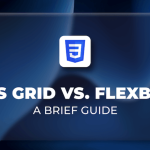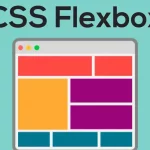
Material UI in AR and VR: Bridging the Gap between Virtual and Tangible Experiences
- Post
- August 5, 2023
- Front-End Frameworks, Material UI, Web Development
- 0 Comments
The convergence of AR and VR with Material UI, a design framework championed by Google, introduces a realm of possibilities that marries aesthetics with functionality. Material UI is founded on the principles of realism, ensuring that digital interfaces resemble their real-world counterparts. This approach adds an intuitive layer to AR and VR experiences, making interactions feel more familiar and intuitive.
Material Design Enhances User Experience
Material Design: At the heart of Material UI lies material design, an innovative philosophy that brings digital elements closer to their physical equivalents. Employing concepts such as depth, lighting, and motion, material design creates a seamless bridge between the physical and virtual worlds. This is particularly pertinent in AR and VR, where users expect a certain level of coherence between what they see through their devices and what they perceive in reality.
Intuitive Interactions through Material UI
Physical Realism in UI Elements: AR and VR thrive on their capacity to immerse users in alternative realities. Material UI bolsters this immersion by integrating UI elements that behave in ways that mimic their physical counterparts. Buttons that react to touch, cards that can be flipped, and panels that respond to gestures make the experience more tactile and intuitive.
Spatial Awareness and Depth Perception
Depth and Dimension: The success of AR and VR experiences is rooted in their ability to create an illusion of depth. Material UI contributes to this by incorporating shadows, lighting effects, and layering, enabling users to better gauge distances and spatial relationships. This spatial awareness is crucial for applications like interior design simulations or medical training in virtual environments.
Consistency Across Platforms
Unified Design Language: Material UI introduces a cohesive design language that extends across various platforms, devices, and applications. This consistency ensures that users can seamlessly transition between different virtual environments without a steep learning curve. This aspect becomes especially relevant in AR and VR, where maintaining a sense of familiarity enhances usability.
Material UI Templates for AR and VR
Accelerating Development: Designing interfaces for AR and VR can be intricate due to the unique challenges posed by these immersive technologies. Material UI templates offer a remedy by providing pre-designed components that are optimized for AR and VR contexts. This expedites development and ensures that best practices in design are adhered to, ultimately leading to more user-friendly experiences.
Accessibility and Inclusivity
Inclusive Design: Material UI has a strong emphasis on accessibility, making digital experiences available to a wider range of users, including those with disabilities. By incorporating this approach into AR and VR, we pave the way for a more inclusive virtual world where everyone can participate and engage without barriers.
Final Words
As AR and VR continue to evolve, the integration of Material UI presents an exciting opportunity to enhance user experiences. By combining the principles of material design with the immersive nature of AR and VR, we can create interfaces that are not only visually appealing but also intuitive and functional. This synergy marks a significant stride towards bridging the gap between the virtual and tangible, making technology an extension of our reality.
Commonly Asked Questions
How does Material UI benefit AR and VR experiences?
Material UI brings a sense of familiarity to AR and VR by mirroring real-world interactions, making the experiences more intuitive and engaging.
Why is consistency important in AR and VR design?
Consistency across platforms ensures that users can seamlessly navigate between different virtual environments, enhancing usability and reducing the learning curve.
How do Material UI templates accelerate development?
Material UI templates provide pre-designed components optimized for AR and VR, streamlining the design and development process while maintaining best practices.
What role does inclusivity play in the integration of Material UI with AR and VR?
Inclusivity ensures that AR and VR experiences designed with Material UI are accessible to a diverse audience, promoting equal participation in the virtual realm.
How does Material UI contribute to spatial awareness in AR and VR?
Material UI employs depth, lighting, and layering to create a sense of dimension, aiding users in gauging distances and spatial relationships within virtual environments.




